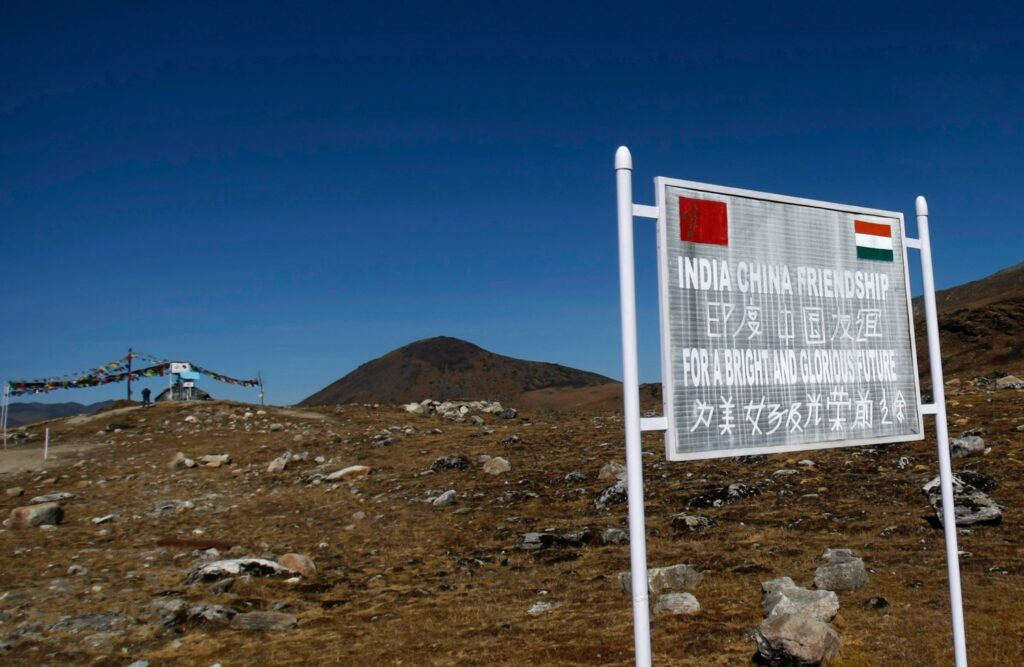The content discusses the escalating strains in the border dispute between India and China and the implications for Asian power dynamics. The article highlights the historical context of the dispute, the causes of the escalating strains, and the implications for power dynamics in the region. It also explores potential resolutions to the dispute, emphasizing the need for increased dialogue, confidence-building measures, and the involvement of regional and international organizations. The conclusion emphasizes the importance of finding a peaceful resolution that respects each country’s sovereignty and encourages cooperation for a prosperous future in Asia.
India-China Border Dispute: Escalating Strains and Implications for Asian Power Dynamics
Introduction
The border dispute between India and China has been a long-standing issue that has recently escalated, causing significant strains in their relations. The disputed border, known as the Line of Actual Control (LAC), stretches over 3,440 kilometers and is poorly demarcated in certain areas, leading to frequent border incursions and confrontations. This article aims to explore the causes of the escalating strains, the implications for Asian power dynamics, and potential resolutions to the dispute.
Historical Context
The border dispute between India and China dates back to the 1962 Sino-Indian War, which resulted in China’s victory and the establishment of the de facto border along the LAC. However, there has never been a formal agreement on the demarcation of the border, leading to differing perceptions of its alignment.
Causes of Escalating Strains
Several factors have contributed to the recent escalation of tensions between India and China. Firstly, both countries have seen an increase in border infrastructure development, including roads, airstrips, and military installations, which has allowed for more frequent incursions and face-offs. These developments have heightened the risk of unintended clashes between their respective armed forces.
Secondly, geopolitical factors have come into play. China’s growing assertiveness in the region, particularly its controversial territorial claims in the South China Sea, has raised concerns among India and its allies. India’s efforts to strengthen its alliances and partnerships with countries such as the United States and Japan are viewed by China as attempts to counter its rise as a global power. This has fueled a sense of competition and mistrust between the two nations.
Implications for Asian Power Dynamics
The border dispute between India and China has broader implications for power dynamics in Asia. As the two most populous countries in the world, their rivalry has the potential to shape the geopolitical landscape of the region. It has implications for other countries in the region as well, who may feel pressured to choose sides or risk being drawn into the conflict.
China’s territorial assertiveness, coupled with its growing military capabilities, has raised concerns about its intentions and the potential for it to dominate the region. India’s efforts to counter China’s influence have led to a closer strategic alignment with the United States and other like-minded countries, creating a balance of power against China’s rise.
Resolving the Dispute
Resolving the India-China border dispute is crucial for regional stability and cooperation. Several attempts have been made over the years to find a peaceful solution, including negotiations and confidence-building measures. However, progress has been slow, and incidents along the border continue to occur.
A possible way forward could be through increased dialogue and confidence-building measures. Both countries need to enhance their diplomatic efforts to find a mutually acceptable solution that respects each other’s concerns and territorial integrity. The establishment of robust border mechanisms, such as hotlines and regular meetings between military commanders, can help prevent misunderstandings and manage crises effectively.
Regional and international organizations, such as the United Nations and the Association of Southeast Asian Nations (ASEAN), can also play a role in facilitating dialogue and mediation between India and China. The involvement of neutral third parties can provide a more impartial platform for negotiations and encourage compromise.
Conclusion
The India-China border dispute has significant implications for Asian power dynamics and regional stability. It is important for both countries to find a peaceful resolution that respects each other’s sovereignty and addresses their respective concerns. By prioritizing dialogue and building mutual trust, India and China can prevent further escalation and work towards a more cooperative and prosperous future for Asia.
